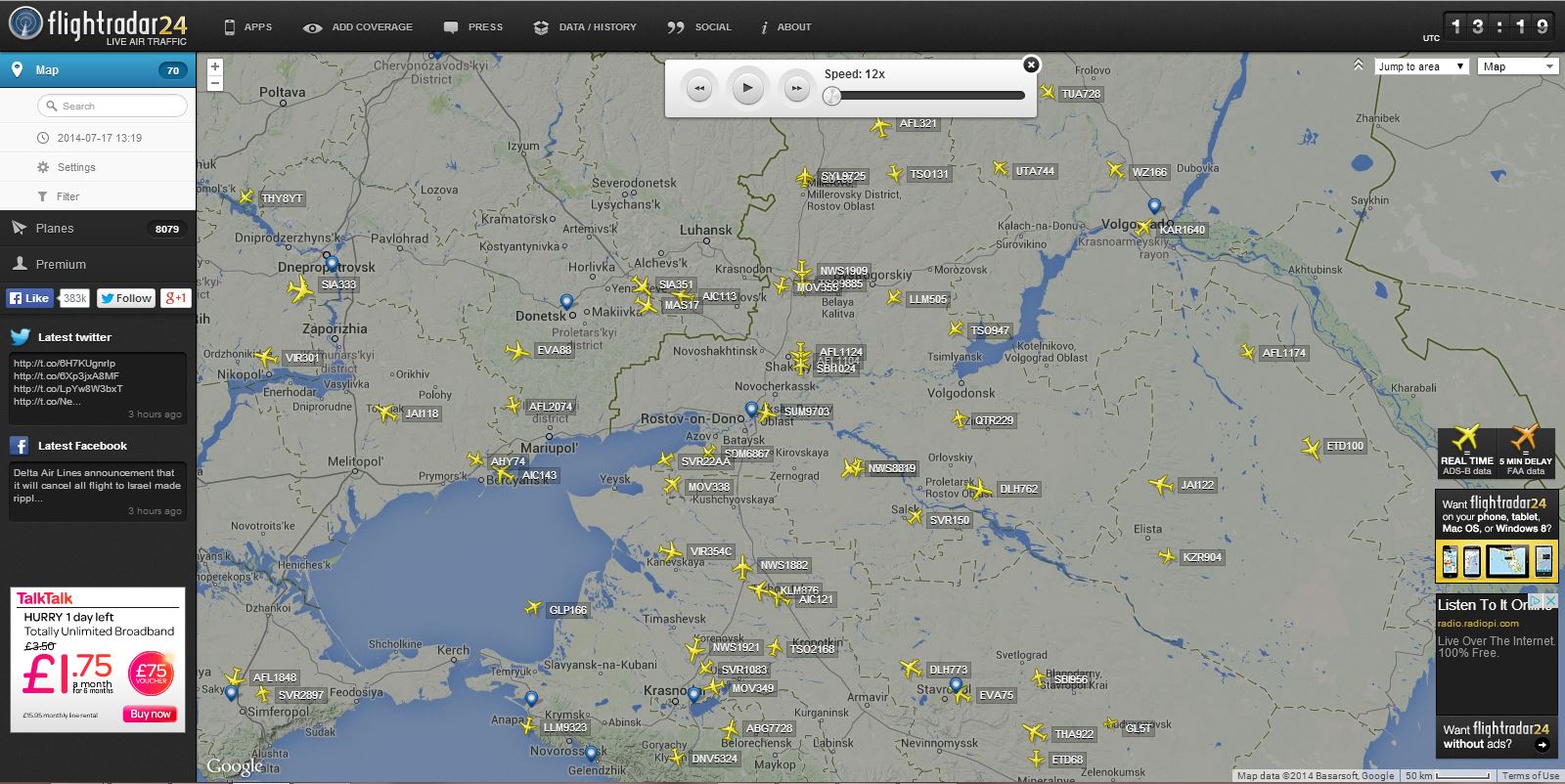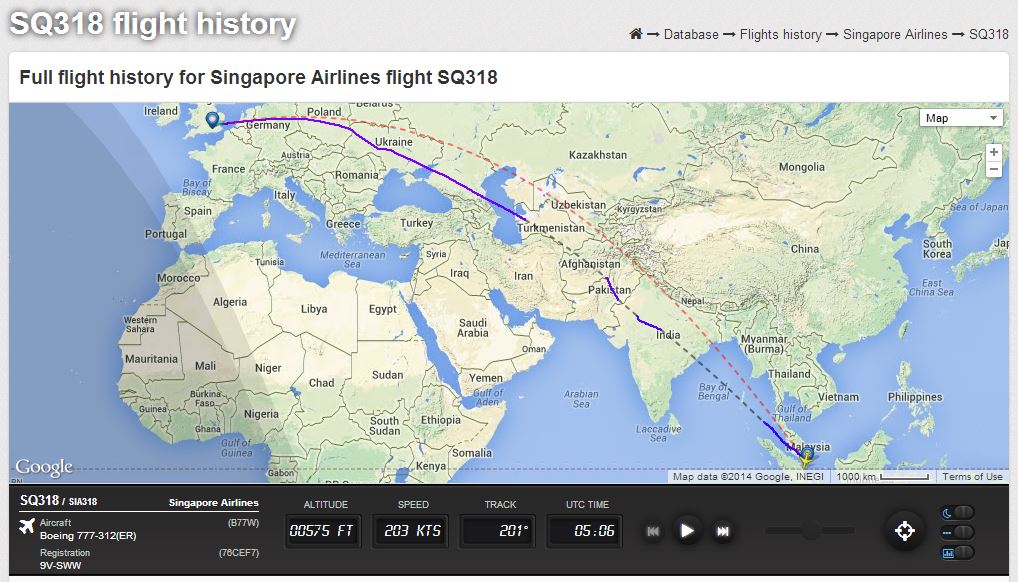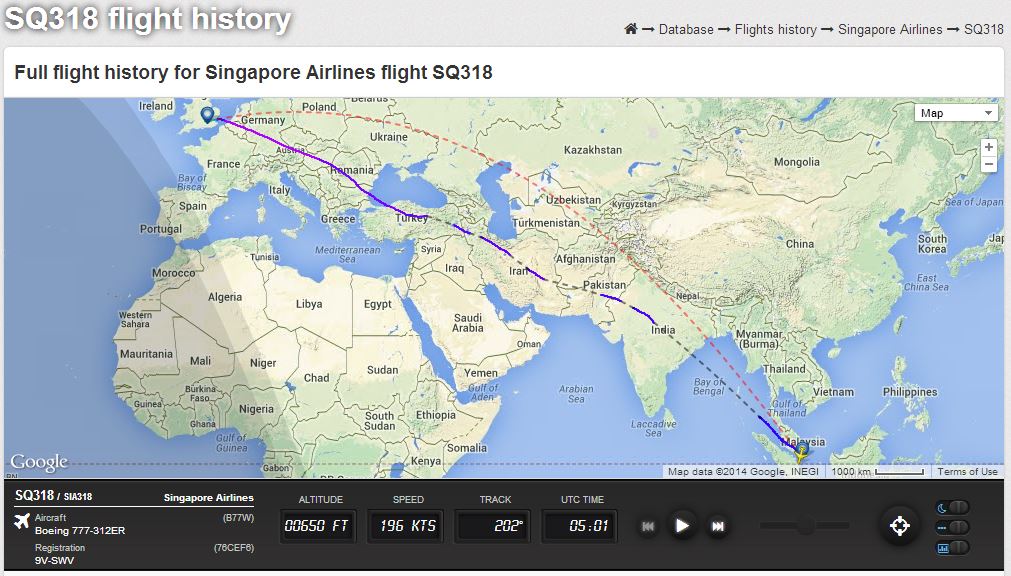Premium carriers like Singapore Airlines, Lufthansa and Virgin Atlantic all pride on providing quality customer service in an attempt to justify the price premium over low cost carriers. Very often, airlines will claim that the safety of passengers is their number one priority. But this cannot be farther from the truth.
On 17th July 2014, MH17 lost contact with air control over the Ukrainian airspace. The US and UK government believe that it was shot down by a BUK missile whilst cruising at an altitude of 33,000 ft. This is supposedly 1,000 ft above the closed airspace. According to the UN’s International Civil Aviation Organisation (ICAO), it is up to individual member states to declare unsafe areas of airspace. Despite attacks on two Ukrainian military aircraft in the area in the past month Ukrainian airspace remained unrestricted above 32,000 ft.
Malaysia Airlines had flown this route repeatedly over the past several weeks without incident, as had other carriers. According to data by FlightRadar24, a site that tracks position of aircraft around the world, two other civilian planes (Singapore Airlines SQ351 (B777) from Copenhagen to Singapore and Air India AI113 (B787) from Delhi to Birmingham) were in close proximity to MH17 at the time of the crash.

Flights in proximity to MH17 (Source: FlightRadar24)

Flight paths for selected airlines using Ukrainian airspace
Since the downing of MH17, air traffic control authorities banned all aircraft from flying through eastern Ukrainian airspace, which might increase flight costs and journey times. It has transpires that several airlines had already chosen to avoid the area. The Guardian reported that a spokesman for Qantas said the Australian flag carrier had not used the route for months. Hong Kong-based Cathay Pacific said it had been taking a detour for “quite some time”. British Airways, Korean Air Lines, Air Berlin, Asiana Airlines and Taiwan’s China Airlines had also been avoiding the east Ukraine route.
This begs the questions of why some airlines choose to continue flying over conflict zones, regardless of flight altitudes. The simple answer is costs.
Flying through Ukrainian airspace is one of the most direct routes when travelling from Europe to Southeast Asia. Taking a longer route would more likely incur higher fuel costs and increases the chances of delays, so flight planers go to extreme lengths to avoid this whenever they can. According to The Australian, the direct operating cost of a Boeing 777-220ER is estimated to run at up to $25,000 per hour. Assuming an aircraft with 8 first class seats, 42 business class seats and 228 economy seats and a load factor of 80%, an extra hour of being airborne adds another $76.00 operating costs per passenger. But does avoiding the Ukrainian airspace really result in much of a detour? Apparently not.
According to the data available on FlightRadar24, SQ318 a daily flight from Singapore to London, the disruption is minimal. Prior to MH17’s accident, SQ318 flies through Ukraine onwards to London. Post 17th July, SQ318 flies through Turkey and Romania onwards to London. Examining the flight data shows that the aircraft arrives at its destination close to its schedule time of arrival, bar one day.

SQ 318 Flight Path pre 17th July 2014 (Source: FlightRadar24)

SQ 318 Flight Schedule (Source: FlightRadar24)

SQ 318 Flight Path post 17th July 2014 (Source: FlightRadar24)
Maybe this will a wakeup call for all carriers to stop cutting corners and put their money where their mouth is. The safety of passengers is paramount and should never be compromised even when there is a financial burden of increased costs.
